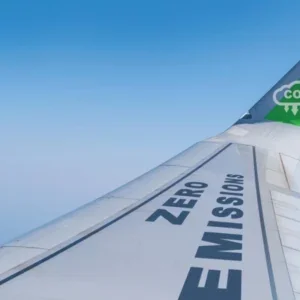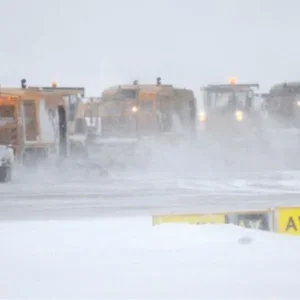With global passenger numbers expected to increase by 4-5% annually, reaching a predicted 7.3 billion in 2024, consumers’ end-to-end journey through airports will need to be carefully managed to ensure efficiency. Long queues can not only cause delays, but negatively impact customer experience and revenue too. Streamlining security, immigration, border protection and customs processes will play a vital part in preparing for the swelling numbers. However, while speed is of the essence, airlines and states cannot afford to compromise on security.
Paul Behan is director – passenger for IATA where he leads the Passenger Experience Management Group (PEMG). One of three focus areas for the group’s work is ‘passenger facilitation’, which looks specifically into best practice for security and immigration processes.
Behan explains that one of the core issues airport stakeholders face is establishing the correct balance between customer preparedness – passengers knowing what is expected of them – and the element of unpredictability that states like to maintain to ensure checks are rigorous.
"If you think of basic things like liquids, large electronics, shoes and belts, the interesting thing from a passenger point of view is that these issues are all slightly different depending on where you go," he says. "That brings a level of inconsistency for the passenger but also a variability that the screening regulators do wish to maintain," he says.
"So you have a trade-off between passenger process, which would ideally be consistent and known well in advance, and the fact that regulators want things to be slightly different depending on the threat level but also just to keep that variability in the process."
Expect the unexpected
While security and immigration agents do need to be able to impose unexpected checks when the threat level dictates, this does not detract from the benefits of improving passenger flow as a whole. In achieving this, the early and ongoing education of passengers is vital. Looking specifically at security checks, for example, attention needs to be paid to layout and the guidance on hand on the day, as well as the educational messages passengers receive.
"We’ve been working on a programme for nearly three years now called ‘security access and egress’, which looks at the current process but doesn’t touch on the screening rules," Behan says. "Most of it is to do with layout and the actual process of divesting: advising passengers at an early stage what to do and providing the right facilities – big enough trays, places to divest without impacting another passenger, and then somewhere following screening to redress and ‘recompose’ – without the pressure of another passenger pushing forward."
Taking Heathrow Airport as an example, Behan describes how passengers are helped through the process.
"There are glass cabinets telling you exactly what you can leave in the bag and what you can take out of the bag," he says. "There are facilities for you to divest water bottles, and staff telling you about the plastic bags for your liquids and gels. It’s really getting that message across to the passengers so that when they turn up at the airport the next time, they already know what to do."
Successful concepts from other airports include instructional images in the bottom of security trays and explanatory videos demonstrating the process as customers queue – all of which help to reinforce the message to ensure passengers are a few steps ahead. After all, simple actions like ensuring a laptop is ready to be taken out can add up to a huge amount of time saved.
"One of the biggest challenges is a passenger turning up at the screening point and then starting to divest," Behan says. "That slows everything down by 30 seconds to a minute, and if every passenger did that, the queue would go out the door. We’re trying to promote passenger training and education so that by the time they get to the actual belt, everything’s ready to go on in a few seconds."
This educational approach includes preparing passengers even before they travel. PEMG’s view of the passenger experience covers everything from ticket purchase through to arrival at the destination, and it recommends that a large part of instructing passengers starts with the passenger at the time of booking. Links to online resources outlining what can be carried within hand luggage and which elements should be ready to be taken out can help the passenger to arrive fully prepared for screening.
Pieces of the puzzle
The set-up of security checkpoints is also very important. Through its research and analysis, PEMG is able to recommend the best queue structures, staff allocation, and relative positioning of X-ray machines and search tables to ensure flow. There is a real emphasis upon reusing existing resources to maximum effect rather than requiring further investment, which is applicable to security, immigration, border control and customs.
Behan explains: "States realise that the current mechanism – the paradigm of adding more checkpoints, more staff and more cost to something that’s growing at 6% globally a year – just isn’t sustainable. But it’s also not that effective because it is really a blunt tool for a process that’s becoming more sophisticated, for threats that are becoming more sophisticated.
"Governments have realised that they need to take a risk-based approach. Somebody described it as not so much looking for the needle in a haystack but blowing the haystack away and looking for the needle on the ground. It’s a totally different mindset, and governments have figured that out."
This risk-based approach is perhaps best seen in PEMG’s recommendations for border control, where there is a move towards automating the process for low-risk passenger groups, such as EU citizens travelling within Europe. Automated border control (ABC), one of the few areas where investment in new resources is in fact recommended, allows more passengers to pass through the gates with fewer staff, meaning officers can focus their attention on passengers who may require closer scrutiny.
For immigration and border checks, as with security, customer preparation can greatly help. States and airlines are increasingly trying to encourage travellers to prepare their paperwork at home. This means that at the airport, passenger data doesn’t need to be entered from scratch, just simply checked.
"One of the shifts that we’re encouraging and working on with the states is the notion of ‘ready to fly and ready to arrive’," Behan says. "By that, we mean that a passenger should be able to get to an airport knowing that they have all the paperwork, that they’ve gone through all the processing, and that the state where they will eventually arrive knows who they are and effectively that they are OK to cross the border with a minimum of hassle and interference."
Checking out of checking in
The time-saving advantages of this to all parties are clear. In fact, the idea of preparation by the passenger, seen at almost every stage of PEMG’s passenger facilitation recommendations, applies more generally to the passenger experience as a whole. Its influence in this regard is only set to increase.
"Over the years, we have tried to change the industry from what was a manual set of processes that everybody had to go through to a self-service platform, whether it was kiosks at the airport, or online or mobile check-in," Behan says, explaining that the next phase for IATA is to bring the "preparedness aspect" forward to replace the standard procedure completely in some places.
"Instead of just trying to automate processes at the airport or a little bit before, we’re looking at how to strip some of these out and actually get rid of them totally, which is a big challenge given that the industry has been through the same set of processes for probably close to 60 or 70 years," he says.
This could mean passengers no longer need to check in at all, with seats and boarding passes allocated on purchase, or issued 24 hours in advance without any required action from the passenger. Bagtagging could also be moved into passengers’ hands, with customers either configuring an electronic bagtag, or printing their own tags at their home or hotel. At the airport, travellers would then only need to complete the bare minimum of tasks – handing in hold baggage if they take any and quickly passing through security.
For airports and airlines, the time and cost savings could be considerable, but there are clear advantages for passengers too; less restricted as to how they spend their time at the airport before they fly, passengers will have more free time to enjoy retail and refreshment opportunities within the airports. Even more importantly, as Behan illustrates, flying starts to become a simpler, almost effortless experience.
"Let’s say you’re going to get a train from London to Scotland," he says. "You don’t think about it that much: you buy your ticket, you turn up and you go. That’s kind of how we’d like aviation to be."






